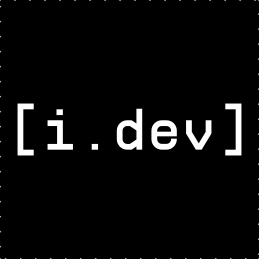1
2
3
4
5
6
7
8
9
10
11
12
13
14
15
16
17
18
19
20
21
22
23
24
25
26
27
28
29
30
31
32
33
34
35
36
37
38
39
40
41
42
43
44
45
46
47
48
49
50
51
52
53
54
55
56
57
58
59
60
61
62
63
64
65
66
67
68
69
70
71
72
73
74
75
76
77
78
79
80
81
82
83
84
85
86
87
88
|
-- Forked from raylib-lua example by TSnake41
-- https://github.com/TSnake41/raylib-lua/blob/master/examples/textures_bunnymark.lua
local MAX_BUNNIES = 100000
-- This is the maximum amount of elements (quads) per batch
-- NOTE: This value is defined in [rlgl] module and can be changed there
local MAX_BATCH_ELEMENTS = 8192
-- Create the Bunny class.
local Bunny = {}
Bunny.__index = Bunny
function Bunny:new( pos, spd, col )
local bunny = {}
setmetatable( bunny, Bunny )
bunny.position = pos
bunny.speed = spd
bunny.color = col
return bunny
end
-- Initialization
local screenWidth = 800
local screenHeight = 450
local texSize = { 0, 0 }
local texBunny = -1
local bunnies = {}
function Bunny:update()
self.position[1] = self.position[1] + self.speed[1]
self.position[2] = self.position[2] + self.speed[2]
if ( ( self.position[1] + texSize[1] / 2 ) > screenWidth )
or ( ( self.position[2] + texSize[1] / 2 ) < 0 ) then
self.speed[1] = self.speed[1] * -1
end
if ( ( self.position[2] + texSize[2] / 2 ) > screenHeight )
or ( ( self.position[2] + texSize[2] / 2 - 40 ) < 0 ) then
self.speed[2] = self.speed[2] * -1
end
end
function RL.init()
RL.SetWindowState( RL.FLAG_VSYNC_HINT )
RL.SetWindowSize( { screenWidth, screenHeight } )
RL.SetWindowTitle( "raylib [textures] example - bunnymark" )
-- Load bunny texture
texBunny = RL.LoadTexture( RL.GetBasePath().."../resources/images/wabbit_alpha.png" )
texSize = RL.GetTextureSize( texBunny )
end
function RL.process( delta )
if RL.IsMouseButtonDown( 0 ) then
-- Create more bunnies
for i = 1, 100 do
if #bunnies < MAX_BUNNIES then
local speed = { math.random( -250, 250 ) / 60, math.random( -250, 250 ) / 60 }
local color = { math.random( 50, 240 ), math.random( 80, 240 ), math.random( 100, 240 ), 255 }
table.insert( bunnies, Bunny:new( RL.GetMousePosition(), speed, color ) )
end
end
end
-- Update bunnies
for i = 1, #bunnies do
bunnies[i]:update()
end
end
function RL.draw()
RL.ClearBackground( RL.RAYWHITE )
for _, bunny in ipairs( bunnies ) do
-- NOTE: When internal batch buffer limit is reached (MAX_BATCH_ELEMENTS),
-- a draw call is launched and buffer starts being filled again;
-- before issuing a draw call, updated vertex data from internal CPU buffer is send to GPU...
-- Process of sending data is costly and it could happen that GPU data has not been completely
-- processed for drawing while new data is tried to be sent (updating current in-use buffers)
-- it could generates a stall and consequently a frame drop, limiting the number of drawn bunnies
RL.DrawTexture( texBunny, { bunny.position[1], bunny.position[2] }, bunny.color )
end
RL.DrawRectangle( { 0, 0, screenWidth, 40 }, RL.BLACK)
RL.DrawText( 0, "bunnies: " .. #bunnies, { 120, 10 }, 20, 2, RL.GREEN )
RL.DrawText( 0, "batched draw calls: " .. math.ceil( 1 + #bunnies / MAX_BATCH_ELEMENTS ), { 320, 10 }, 20, 2, RL.RED )
RL.DrawFPS( { 10, 10 } )
end
|
